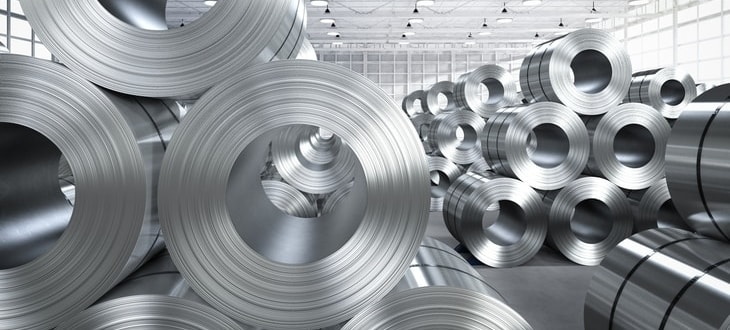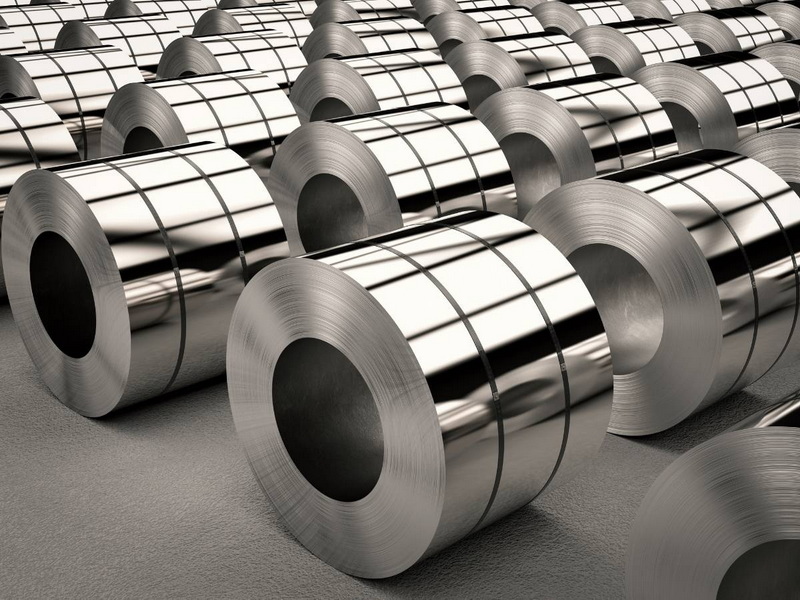English


Views: 222 Author: Tomorrow Publish Time: 2025-07-15 Origin: Site











Content Menu
● What Are Hot Rolled Stainless Steel Sheets?
>> Key Features of Hot Rolled Stainless Steel Sheets
● What Are Cold Rolled Stainless Steel Sheets?
>> Key Features of Cold Rolled Stainless Steel Sheets
● Detailed Comparison: Cold Rolled Vs Hot Rolled Stainless Steel Sheets
● Factors Influencing the Choice Between Cold Rolled and Hot Rolled Stainless Steel Sheets
● Overview of Manufacturing Processes
● Benefits and Limitations of Each
● Applications for Hot Rolled and Cold Rolled Stainless Steel Sheets
>> Fabrication and Post-Processing
● FAQ
>> 1. What is the main difference between cold rolled and hot rolled stainless steel sheets?
>> 2. Which stainless steel sheet has better surface quality?
>> 3. Are cold rolled sheets stronger than hot rolled sheets?
>> 4. Is hot rolled stainless steel cheaper than cold rolled?
>> 5. What applications are best suited for hot rolled vs cold rolled stainless steel sheets?
Stainless steel sheets are indispensable in numerous industries such as construction, automotive, appliances, and manufacturing. Two common types of stainless steel sheet processing are hot rolling and cold rolling. Understanding the key differences between these two methods is essential for selecting the right material suited for your specific application, both in terms of mechanical properties and surface finish. This article offers a comprehensive exploration of cold rolled and hot rolled stainless steel sheets by examining their production processes, physical characteristics, advantages, drawbacks, and typical uses.

Hot rolled stainless steel sheets are produced by rolling the steel at very high temperatures, typically around or above 1100°C, which is above the metal's recrystallization temperature. The high temperature makes the steel malleable, allowing it to be shaped and formed easily.
The process begins with a heated billet or slab of stainless steel that is fed through rollers to reduce thickness and extend it into sheets. The steel then cools down naturally at room temperature. This method yields steel sheets with increased toughness, ductility, and weldability. However, due to the elevated temperatures and the cooling that follows, the final steel surfaces often develop a rough texture with scaled or oxidized skin, and the sheets may experience slight shrinkage, leading to less precise dimensional accuracy.
- Processed above recrystallization temperature, making them easier to shape.
- Rougher surface with possible scaling or oxide layers.
- Lower precision with less consistent thickness and dimensions.
- Good ductility and toughness due to thermal processing.
- Generally less expensive and quicker to produce.
- Commonly used when precise dimensions or surface finish are not critical.
Cold rolled stainless steel sheets start with hot rolled sheets but then undergo further processing at room temperature, below the recrystallization threshold. This additional processing involves passing the sheets through rollers at ambient temperature, often combined with operations such as drawing, grinding, and polishing.
The cold rolling process compresses the steel further, creating a tighter grain structure that enhances strength, hardness, and surface finish. Cold rolled stainless steel sheets offer a smooth, shiny surface with tight dimensional tolerances and well-defined edges. The cold rolling also increases internal stresses and hardness, requiring possible stress-relief heat treatments depending on usage.
- Processed below recrystallization temperature for increased strength.
- Smooth, bright, and aesthetically appealing surface finish.
- High dimensional accuracy with close tolerances.
- Greater hardness and resistance to deformation.
- Higher production cost due to extra processing steps.
- Preferred in applications requiring fine surface quality and precise dimensions.
| Aspect | Hot Rolled Stainless Steel | Cold Rolled Stainless Steel |
|---|---|---|
| Processing Temperature | Above recrystallization temperature (~1100°C) | Below recrystallization temperature (room temperature) |
| Surface Finish | Rough, scaled, matte, possible oxide skin | Smooth, shiny, clean with no scaling |
| Dimensional Accuracy | Lower precision, variable thickness, slight distortions | Higher precision, tight tolerances, consistent thickness |
| Mechanical Properties | Good toughness and ductility, lower strength | Higher strength and hardness due to cold working |
| Internal Stresses | Minimal, normalized by cooling | Higher internal stress, may need annealing |
| Formability & Weldability | Excellent formability and weldability due to hot processing | Less ductile but stronger; may be harder to weld or form |
| Production Cost | Cost-effective and faster | More expensive due to additional processing |
| Typical Uses | Structural components, heavy machinery, rough industrial use | Appliances, automotive panels, precision parts, decorative surfaces |
Choosing between hot rolled and cold rolled stainless steel sheets depends largely on the specific requirements of your project:
- Surface Requirements: For applications demanding an excellent surface finish and appearance, cold rolled sheets are preferred.
- Dimensional Control: Cold rolled sheets provide exact dimensions, useful where precision is critical.
- Mechanical Strength Needs: Cold rolled sheets offer higher strength and hardness.
- Cost Sensitivity: Hot rolled sheets are less expensive and sufficient where surface roughness or dimensional tolerances are relaxed.
- Forming and Welding: Hot rolled sheets are generally easier to form and weld.
- Application Environment: For heavy-duty or large structural applications, hot rolled sheets are common; for consumer products or automotive bodies, cold rolled sheets dominate.

- Starts with heating steel slabs above recrystallization temperature.
- Passes through heavy rollers to reduce thickness.
- Sheets cool naturally, surface forms oxides (scaling).
- Grain structure reforms, providing toughness and ductility.
The hot rolling process involves a series of mechanical deformations at elevated temperature, which not only facilitates shaping but also helps break down coarse structures in the steel material. This process improves the material's toughness and reduces defects that can occur in cast steel.
Besides the mechanical benefits, hot rolling also simplifies the manufacturing process, allowing thicker sheets and heavier gauges to be produced efficiently. However, the finished sheets retain a rough surface finish that can affect corrosion resistance in certain conditions unless they undergo further cleaning or mechanical treatments.
- Begins with hot rolled sheets at room temperature.
- Sheets undergo successive cold passes through rollers.
- Surface is polished or ground upon request.
- Material strain hardens, improving strength but increasing internal stress.
- Optionally annealed to relieve residual stress.
Cold rolling often involves multiple passes through the rollers, each pass incrementally reducing the thickness. This deformation leads to a work-hardened state where the metal's grains align and refine. The finish obtained after cold rolling is precise and sleek, enabling further fabrication with improved fit and finish requirements.
Additional processes such as skin pass rolling or heat treatment may be applied after cold rolling to normalize material characteristics or remove induced stresses that can cause warping or distortion on later use.
| Type | Benefits | Limitations |
|---|---|---|
| Hot Rolled Stainless Steel | Cost-effective, good toughness, easy to form and weld | Rough surface, less precise dimensions |
| Cold Rolled Stainless Steel | Superior finish, higher strength, tight tolerances | More expensive, potential internal stresses, harder to form |
The different characteristics of hot and cold rolled stainless steel sheets make them suitable for different end uses:
- Hot Rolled Sheets: Their toughness and moderate strength are favored in construction frameworks, structural beams, and outdoor heavy machinery parts. Where the appearance does not matter or can be enhanced later with coatings, hot rolled sheets provide robust and cost-effective solutions.
- Cold Rolled Sheets: Their smooth surface and mechanical strength make them ideal for household appliances like refrigerators and ovens, automotive body panels, architectural paneling, and decorative trims. Cold rolled sheets excel in applications where surface cleanliness and close tolerances are critical.
Though both types use stainless steel alloys that inherently resist corrosion, the surface condition post-processing influences corrosion behavior. Hot rolled sheets' rough finish can harbor contaminants and moisture, promoting localized corrosion if not properly cleaned or finished. Cold rolled sheets, with their smooth and often polished surfaces, reduce such risk and improve the longevity of components in corrosive environments.
Hot rolled sheets tend to be more malleable and easier to cut, weld, and form because the steel remains more ductile after processing. Cold rolled sheets, being harder and stronger, require sharper tools and may demand heat treatments before extensive forming or welding.
Cold rolled sheets maintain higher dimensional stability after fabrication because of their precise tolerances and reduced internal defects. Hot rolled sheets can experience slight warping or twisting during cooling or fabrication.
The choice between cold rolled and hot rolled stainless steel sheets depends on your project's unique needs—including surface finish, mechanical strength, cost, and application environment. Hot rolled sheets offer an economical and tough option suitable for industrial and structural purposes where surface aesthetics are secondary. Cold rolled sheets provide superior mechanical strength, improved surface finish, and dimensional accuracy, making them the best option for consumer goods, automotive parts, and precision applications. Understanding these differences helps ensure you select stainless steel sheets that bring the right balance of performance and value to your application.

The primary difference is the temperature at which the steel is processed: hot rolled sheets are processed above the recrystallization temperature (high heat), whereas cold rolled sheets are further processed at room temperature, giving them a smoother finish and higher strength.
Cold rolled stainless steel sheets have a much smoother, shinier surface with no scale or oxide layers, making them ideal for applications where surface finish is important. Hot rolled sheets generally have a rough, matte surface.
Yes, cold rolled sheets are stronger and harder because the cold working process compresses the steel and refines its grain structure, increasing its mechanical strength.
Hot rolled stainless steel sheets are generally less expensive due to their simpler and faster production process, making them cost-effective for applications that do not require precise dimensions or surface finish.
Hot rolled sheets are commonly used for structural components, heavy machinery, and applications where surface finish is not critical. Cold rolled sheets are suited to applications such as automotive panels, appliances, and precision instruments that require tight tolerances and excellent finishes.
Stainless Steel Grades 201 Vs 304: Cost Vs Performance Breakdown
316L Vs 316 Stainless Steel Grades: Which Is Better for Corrosion Resistance?
Comparing Austenitic Vs Martensitic Stainless Steel Grades: What You Need To Know?
Stainless Steel 430 Vs 304: Key Differences Explained for Manufacturers
304 Vs 316 Stainless Steel Grades: Which One Suits Your Project Best?
Stainless Steel Pipes Vs Galvanized Pipes: Durability And Cost Analysis
Comparing Stainless Steel Pipes And PVC Pipes: What You Need To Know?
Stainless Steel Pipes Vs Copper Pipes: Pros And Cons for Industrial Use
Seamless Stainless Steel Pipes Vs Welded Pipes: Key Differences Explained
Stainless Steel Pipes Vs Carbon Steel Pipes: Which One Suits Your Project?
